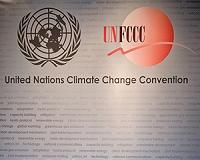 |
Kussjoen, Sweden (AFP) Dec 5, 2010 With a thick carpet of snow softening his footsteps, Stefan Nordstroem creeps slowly between the tall pine and birch trees, his rifle at the ready. He is hunting moose, the towering symbol of Sweden and a prized catch for hunters in the Scandinavian country every autumn. "One bullet is enough, if you aim well," says Nordstroem, a 61-year-old entrepreneur who made his first kill when he was 20, showing off a 9.5 millemetre bullet. "The animal usually continues on for about 50 metres (yards) before collapsing," he explains. Every hunting season, which lasts from the beginning of September to the end of January, nearly 270,000 hunters set off to track moose across Sweden, killing more than 80,000 of these giant kings of the forest. That, according to the Swedish Hunting Association, accounts for between a fifth and a quarter of the country's entire moose stock. Not everyone can get the job done with a single shot though, Nordstroem jokes, mentioning a friend, Peter, who once used a full five bullets to make his kill. "Since then, just between us, we named him re-Peter," Nordstroem laughs, fondly patting his rifle, dubbed "the moose sweeper". It is 8:00 am, and as he heads back to his lookout-post, a thin sliver of sunlight is just pushing up behind the treetops in this dense forest in the Swedish region of Norrland, some 250 kilometres (155 miles) south of the Arctic Circle. The former army reserve officer and his hunting buddies have this year been handed a quota of 10 adult moose and 10 young ones, and are permitted to track the animals across 60,000 hectares (148,000 acres) of sparsely inhabited land surrounding the Kussjoen lake. -- The waiting game -- ---------------------- The long wait begins, and Nordstroem is quiet, motionless. The silence is heavy and palpable, only interrupted by the occasional distant barking of dogs or by a word or two whispered into the walkie-talkie to check on the other hunters in the group who are spread out at other strategic locations in the forest. Even the wind is still. After more than two hours of shivering in well-below freezing temperatures, there is still no moose in sight, the radio is still, the dogs drowsy. Then suddenly, a noise. Nordstroem points his rifle as a female suddenly bursts from the brush, thundering past only about 15 metres from his position. He lowers his gun. His team has already killed too many adults, and he can only shoot if he spots a young animal born this past spring. With their age-divided quotas, Swedish authorities aim to ensure a balance between the numbers of fertile adults and young-ones in a bid to keep the number of births each year at an optimal level. "Really unlucky," Nordstroem complains, slumping back down. He consoles himself with the fact that he at least will not be going home empty-handed. In the rudimentary hunting shack he's using, a 250-kilo (550-pound) moose is already hanging from the ceiling -- the fruit of a recent and more successful hunt. The animal, skinned and with its intestines and internal organs removed, will hang this way for around 10 days to help tenderise the meat. "An adult moose generally ways around 400 kilos. But it can reach 800 kilos, and about half of that is meat," Stefan explains, chewing on a piece of dried moose meat and relaxing with his hunting companions. After Russia, Sweden counts Europe's largest population of moose, which are also found in Norway, Finland and the Baltic countries. Moose hunting, even in Sweden, perhaps the world's most feminist countries, remains an almost exclusively male pastime. That is something Nordstroem and his friends don't seem to mind, as they sit around a campfire eating lunch and telling dirty jokes. Behind them, an old magazine clipping is tacked to the look-out post wall. "Man's final frontier," reads the caption above a picture of a rugged hunter perched on his watchtower.
Share This Article With Planet Earth
Related Links Farming Today - Suppliers and Technology
 Agriculture And International Climate Change Negotiations
Agriculture And International Climate Change NegotiationsCancun, Mexico (SPX) Dec 03, 2010 Not content to see farming remain outside the international climate change negotiations under way in Mexico, a broad coalition of 17 organizations will bring together more than 400 policy makers, farmers, scientists, business leaders and development specialists on Saturday, December 4 to define steps for opening the door to agriculture within the next six months, permitting its full inclusion in ... read more |
|
| The content herein, unless otherwise known to be public domain, are Copyright 1995-2010 - SpaceDaily. AFP and UPI Wire Stories are copyright Agence France-Presse and United Press International. ESA Portal Reports are copyright European Space Agency. All NASA sourced material is public domain. Additional copyrights may apply in whole or part to other bona fide parties. Advertising does not imply endorsement,agreement or approval of any opinions, statements or information provided by SpaceDaily on any Web page published or hosted by SpaceDaily. Privacy Statement |